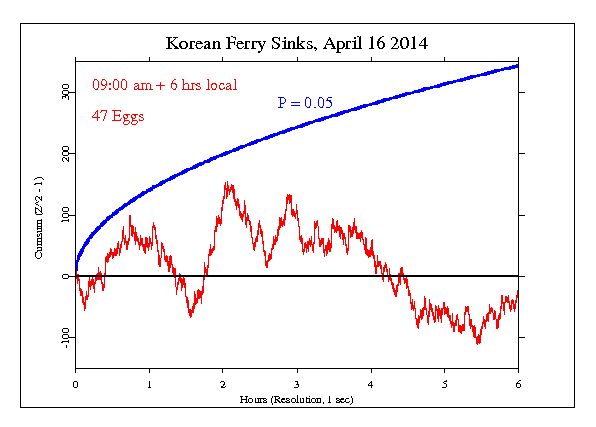Korean Ferry Disaster
Standard analysis
The sinking of the MV Sewol occurred on 16 April 2014 en route to Jeju from Incheon. The South Korean ferry capsized while carrying 476 people, mostly secondary school students from Danwon High School (Ansan City). The 6,825-ton vessel sent a distress signal from about 2.7 kilometres off Gwanmaedo Island at 08:58 Korea Standard Time (23:58 UTC, 15 April 2014)
The Sewol began listing sharply at around 9 a.m. last Wednesday, after making a sharp turn just outside Jindo Island, on its way from the city of Incheon to the resort island of Jeju. Within two hours, the ship — carrying 476 passengers, the majority of which were high school students going on a field trip — was submerged. Besides the 174 passengers rescued on the first day, no survivors have been found. The confirmed death toll hit at least 171 on Thursday, and the remaining missing passengers are feared dead.
The tragedy is the worst maritime disaster in over two decades in South Korea and has evoked sympathy from all over the world — even from the country’s longtime nemesis North Korea. A spokeswoman for the South Korean Unification Ministry quoted a message from Pyongyang, which said “We express condolences for the missing and dead, including young students, from the sinking of the Sewol.”
The GCP event was set for 6 hours beginning at 00:00 UTC, 16 April, about the time of the distress signal. The result is Chisquare 21585 on 21600 df, for p = 0.528 and Z = -0.070.

Standard Caveat: It is important to keep in mind that we have only a tiny statistical effect, so that it is always hard to distinguish signal from noise. This means that every “success” might be largely driven by chance, and every “null” might include a real signal overwhelmed by noise. In the long run, a real effect can be identified only by patiently accumulating replications of similar analyses.
